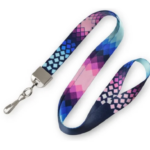In the world of accessories, lapel pins have emerged as versatile and stylish adornments that make powerful statements in various contexts, from corporate events to personal fashion statements. Starting a lapel pin business requires a strategic approach that encompasses design, production, marketing, and customer engagement. This blog aims to provide a comprehensive guide on how to venture into the lapel pin industry, turning creativity into a thriving business.
Understanding the Lapel Pin Market:
Lapel pins have transcended their traditional association with formal attire and now serve as unique expressions of personal style and brand identity. Before diving into the business, it’s crucial to understand the diverse applications of lapel pins:
- Corporate Branding: Lapel pins offer companies a subtle yet effective way to promote their brand. Custom pins featuring logos, slogans, or brand colors contribute to corporate identity.
- Fashion Accessories: Lapel pins have become sought-after fashion accessories. From quirky designs to minimalist styles, they cater to individuals looking to make a statement with their attire.
- Collectibles and Commemoratives: Lapel pins are often associated with commemorating special events, anniversaries, or achievements. This market segment includes collectors and those seeking keepsakes.
Steps to Launch Your Lapel Pin Business:
- Market Research: Begin by conducting thorough market research. Identify your target audience, analyze competitors, and understand current trends in lapel pin design and usage. This knowledge will shape your business strategy.
- Design and Customization: Invest in creative and unique designs that cater to various customer preferences. Consider offering customization options to attract corporate clients seeking bespoke pins for their branding needs.
- Material Selection: Choose materials that align with the desired quality and aesthetic of your lapel pins. Common materials include enamel, metal alloys, and, for higher-end options, precious metals.
- Manufacturing Partnerships: Establish reliable partnerships with manufacturers. Ensure they have the capabilities to produce high-quality lapel pins that meet your design specifications.
- Online Presence: Create a professional and user-friendly website showcasing your lapel pin collections. Implement an e-commerce platform to facilitate online sales. Utilize social media platforms to showcase your designs and engage with potential customers.
- Marketing Strategies: Develop a comprehensive marketing plan that includes both online and offline strategies. Utilize social media advertising, influencer partnerships, and attend trade shows or local events to promote your lapel pins.
- Customer Engagement: Foster strong relationships with your customers. Provide excellent customer service, respond to inquiries promptly, and consider implementing a loyalty program to encourage repeat business.
- Quality Control: Implement rigorous quality control measures to ensure that each lapel pin meets the highest standards. Quality assurance is vital for building and maintaining a positive brand reputation.
Navigating Challenges:
- Design Copyright: Be mindful of copyright laws when creating designs. Ensure that your designs are original or properly licensed to avoid legal complications.
- Supply Chain Issues: Stay informed about potential supply chain disruptions. Diversify your suppliers when possible to mitigate the impact of unforeseen challenges.
- Competitive Pricing: Strike a balance between offering competitive prices and maintaining profitability. Consider the perceived value of your lapel pins and position them accordingly in the market.
Scaling Your Lapel Pin Business:
As your lapel pin business gains traction, consider the following strategies to scale:
- Expand Product Range: Introduce new designs and product lines to cater to a broader audience. Consider collaborating with artists or influencers to create limited-edition collections.
- Wholesale Partnerships: Explore opportunities to partner with retailers, both online and brick-and-mortar. Wholesale partnerships can significantly expand your reach and sales volume.
- International Expansion: Evaluate the potential for international sales. Research and understand the regulations and logistics involved in selling your lapel pins globally.
Conclusion:
Starting a lapel pin business requires a blend of creativity, strategic planning, and a commitment to quality. By understanding market trends, establishing strong partnerships, and implementing effective marketing strategies, you can turn your passion for lapel pins into a successful and sustainable business. Remember that customer satisfaction and innovation are key drivers in this dynamic and evolving industry.








